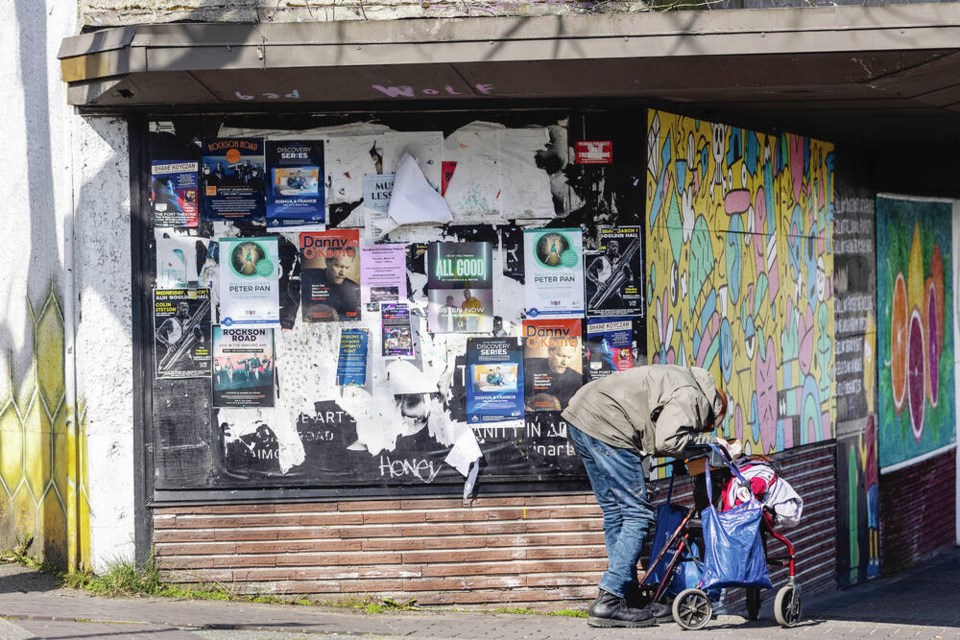An updated count of the unhoused in Nanaimo is planned for this fall so community organizations can better understand how many people are living without shelter, how they are coping and what services are needed.
Vicky Trill, Reaching Home manager with the United Way B.C., told city council this week that the group and other organizations are working with B.C. Housing to standardize point-in-time surveys among B.C. communities.
Trill said plans for the Nanaimo count include partnering with the Snuneymuxw First Nation and the federal government.
Results from the most recent Nanaimo point-in-time count, done in April 2023, were presented to council this week, and showed the number of unhoused people in the city jumped by nearly 20 per cent to at least 515 from spring 2020, when 433 people were counted.
Andrew Thornton of the Nanaimo Systems Planning Organization society, which focuses on addressing issues around homelessness, called the number “an estimate and an undercount.”
Thornton explained that the report to council on the 2023 data took a year because of the higher volume of survey data and delays in getting it. He said even with more than 80 volunteers combing the community and data from shelters, hospitals and other institutions, the 515 figure is believed to represent just 60 per cent of unhoused people in the region.
The real total could be 1,000 — a number workers at other agencies have come up with as well, he said.
Participants complete surveys voluntarily and not everyone takes part. In addition, only people 18 and older can be included in the survey, Thornton said.
It can also be difficult to count people living in their vehicles or in out-of-the way places.
The numbers for the point-in-time survey have risen sharply since the winter of 2016, when 174 people said they had experienced homelessness. By spring of 2018, the number had risen to 335 people.
“What we can see is we’ve basically tripled since 2016,” Thornton said.
The 2023 count was paid for by a federal program called Reaching Home: Canada’s Homelessness Strategy and the United Way B.C. It was administered and supported by the Canadian Mental Health Association’s mid-Island branch, the Homelessness Services Association of B.C. and others.
Last year’s survey data showed that 404 of the 515 people surveyed were living without shelter. They could be sleeping rough, on stairwells, in parks or in hard-to-find locations, Thornton said.
“We see them all over the place in Nanaimo because there is literally nowhere for them to go,” he said. “They are so visible we don’t have enough or even near enough shelter spaces.”
Another 89 survey respondents might be in shelters, a hotel or transitional housing. And 22 could be in hospitals or a detox facility or treatment facilities.
The unhoused in Nanaimo typically have three medical issues and many have four or five, said Thornton, who noted that Nanaimo has a higher rate of unsheltered people per capita than similar-sized communities such as Kamloops, which counted 312 homeless people last year.
According to the survey, the top-five challenges people have experienced when trying to find housing include low incomes, too-high rents, addiction and substance abuse, family breakdown and discrimination.
When emergency shelters or transitional spaces are available, they create a bridge to other supports, along with better health care, while a lack of such services will drive up the number of people without homes, Thornton said.
“One of the things we can see from 2020 is it looks like chronic homelessness is increasing. What that means is that people are on the street even longer for more extended periods of time.”
Thornton praised programs such as the local rent bank, which helps residents cover costs when money runs short.
A total of 35 per cent of survey respondents said they had lost housing because they were evicted. Thornton noted that people are evicted for all kinds of reasons, but it is an issue that can often be addressed. Different kinds of supports can be offered, including the rent bank.
“One of the best things to lower homelessness is to prevent homelessness.”
To read Thornton’s 48-page report, go to: nanaimospo.com/research-and-knowledge- mobilization.
>>> To comment on this article, write a letter to the editor: [email protected]



